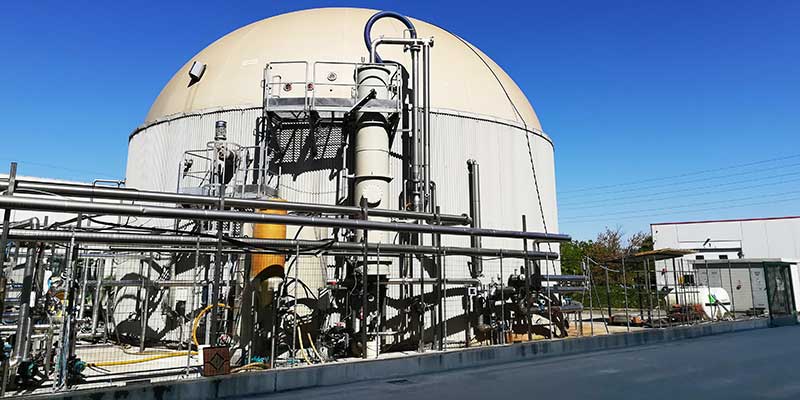
Introduction
Waste-to-Energy (WtE) adoption is a topic of increasing relevance and importance in today’s world. As governments worldwide grapple with the challenges of sustainable waste management and energy production, they are turning to incentives to promote the widespread adoption of WtE technologies. This article aims to provide a comprehensive review of government incentives for promoting WtE adoption, exploring its historical background, key concepts, main discussion points, current trends, challenges, controversies, and future outlook.
Historical Background
The evolution of waste management practices has witnessed a significant shift towards finding sustainable solutions. The emergence of Waste-to-Energy (WtE) as a viable solution has gained traction, particularly due to its ability to address the dual challenges of waste management and energy production. Historical use of government incentives to promote WtE adoption can be traced back to the early 20th century when countries like Germany and Denmark pioneered the implementation of such measures.
Key Concepts and Definitions
Waste-to-Energy (WtE) refers to the process of converting waste materials into usable energy, such as electricity or heat. This section will provide a comprehensive definition and explanation of the WtE process. Additionally, it will delve into the concept of government incentives, which encompass various forms such as tax credits, grants, subsidies, and feed-in tariffs. The objective and benefits of government incentives for WtE adoption will also be explored, highlighting their potential to drive sustainable waste management and energy production.
Main Discussion Points
Types of government incentives for promoting WtE adoption
Tax Credits: Tax credits play a crucial role in incentivizing investment in WtE facilities. By offsetting costs and providing financial benefits, tax credits encourage businesses and individuals to embrace WtE technologies. This section will delve into the details of how tax credits can effectively promote WtE adoption and contribute to the achievement of sustainability goals.
Grants and Subsidies: Government funding programs in the form of grants and subsidies provide the necessary financial support for WtE projects. These incentives enable the development and implementation of WtE technologies by reducing financial barriers. The article will explain the functioning of government grants and subsidies and their significant impact on driving WtE adoption globally.
Feed-in Tariffs: Policies that offer fixed payments for electricity generated from WtE facilities, commonly known as feed-in tariffs, further incentivize WtE adoption. This section will provide an overview of how feed-in tariffs work, their effectiveness in promoting WtE, and their role in diversifying the energy mix.
Case studies of successful government incentives for promoting WtE adoption
Through a detailed exploration of specific government incentives and their impact on WtE adoption rates, this case study will highlight the efficacy of government support in driving WtE implementation. Key learnings and best practices from this country’s experience will be highlighted to provide valuable insights.
Examining a different approach to government incentives, this case study will shed light on alternative strategies and their effectiveness in promoting WtE adoption. By comparing and contrasting the outcomes, readers will gain a broader understanding of the various paths governments can take to encourage WtE adoption.
An analysis of how government incentives have helped overcome barriers to WtE adoption will showcase the transformative power of such measures. By examining the challenges faced and the solutions implemented, this case study will provide valuable insights into successful WtE adoption facilitated by government incentives.
Potential challenges and limitations of government incentives for promoting WtE adoption
Economic considerations: While government incentives have proven effective in promoting WtE adoption, economic considerations play a crucial role. This section will discuss the cost-effectiveness and long-term sustainability of government incentives, addressing concerns regarding the financial implications and their impact on the overall economy.
Environmental concerns: The potential environmental impacts of WtE facilities and the need for strict regulations are significant factors that require careful consideration. This section will delve into potential negative implications, including emissions and pollution associated with WtE, and the importance of comprehensive regulatory frameworks to mitigate these concerns.
Public perception: Addressing public misconceptions and concerns is essential to foster public support for WtE adoption. This section will explore common misconceptions surrounding WtE facilities and their impact on communities, emphasizing the need for transparent communication and stakeholder engagement to build trust.
Current Trends or Developments
Recent research findings on the effectiveness of government incentives for promoting WtE adoption will be explored, shedding light on the evolving landscape. Emerging technologies and innovations in WtE that can be supported by government incentives will also be discussed to showcase the potential for future advancements. Additionally, international collaborations and partnerships to promote WtE adoption through government incentives will be highlighted, emphasizing the global nature of this issue and the need for collective action.
Challenges or Controversies
Debate on the role of WtE in the broader waste management hierarchy and its potential to encourage waste generation will be examined. Controversies surrounding the environmental impact and emissions of WtE facilities will also be discussed, providing a balanced perspective on the challenges faced. Opposition from local communities and environmental organizations will be highlighted, showcasing the importance of addressing concerns and fostering dialogue.
Future Outlook
The article will explore the potential for increased government incentives to drive further WtE adoption, pointing towards an optimistic future. Integration of WtE with other renewable energy sources and circular economy initiatives will be explored as a means to enhance sustainability. Furthermore, the development of comprehensive regulatory frameworks to ensure sustainable and responsible WtE practices will be emphasized as a crucial step towards achieving long-term goals.
Conclusion
This article has provided a comprehensive overview of government incentives for promoting WtE adoption. By examining historical background, key concepts, main discussion points, current trends, challenges, controversies, and future outlook, the significance and potential benefits of government incentives for promoting WtE adoption have been highlighted. With the growing global focus on sustainable waste management and energy production, government incentives play a pivotal role in driving widespread adoption of WtE technologies.